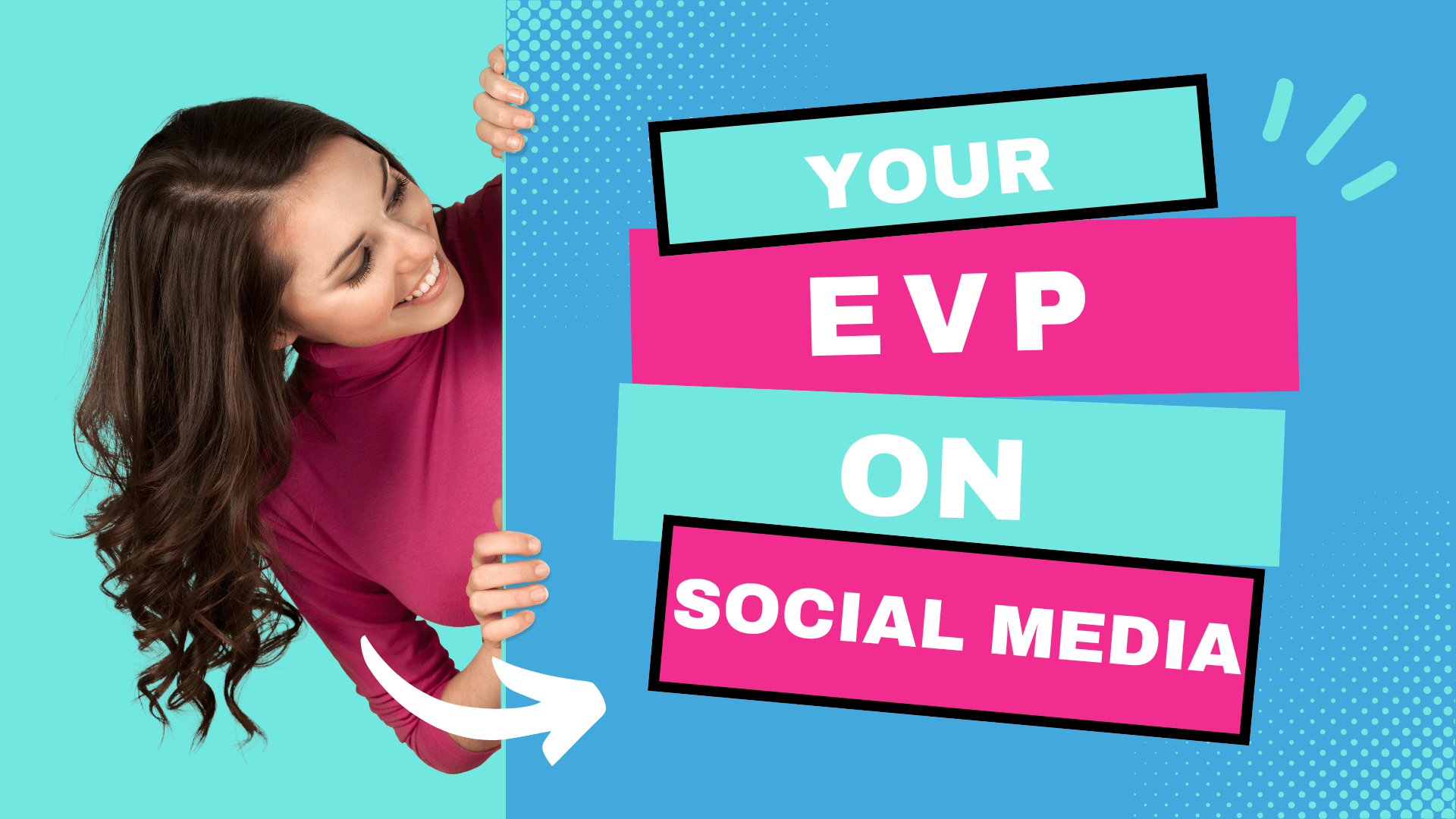How to Activate Your EVP Through Social Media

Social media isn't just a nice-to-have anymore — it’s a core strategy for talent engagement and recruitment marketing. Nearly every employer branding practitioner is using it, and for good reason: it works. When paired with a well-defined Employee Value Proposition (EVP), social media becomes a powerful vehicle for showcasing what makes your organization unique.
Even if your EVP isn’t perfect, having a “good enough” version allows you to start communicating your value to potential candidates. The key is to begin sharing and refining over time. Here’s how social media can bring your EVP to life and enhance your employer brand:
Share Authentic Employee Experiences and Culture Insights
Candidates crave authenticity, and social media is the perfect place to deliver it. Behind-the-scenes videos, real employee stories, day-in-the-life clips, and posts about community involvement give followers a peek into your culture.
When employees feel seen and valued, they’re more likely to share their own experiences, which builds trust with your audience. This type of content helps you attract candidates who align with your mission, values, and vibe.
Sponsored Content
Authentic moments have a power that no marketing budget can match. When captured and shared, these genuine stories forge lasting connections with both current and future talent. This guide helps you recognize and create these meaningful experiences, turning fleeting moments into lasting relationships.
Encourage Employee Advocacy
One of the most powerful ways to scale your employer brand? Employee advocacy. When team members share their work experiences, it expands your reach and boosts credibility.
Encourage them to use branded hashtags, participate in social campaigns, and even create short videos filmed on their phones. User-generated content, especially on platforms like TikTok, can go a long way in building momentum. Identify and support employee ambassadors who are excited to tell their stories — whether through blogs, videos, or quick social posts.
Focus on Brand Impressions and Education
Not every post has to lead directly to an application. In fact, the most effective social strategies often focus on creating positive brand impressions and offering value.
Educate your audience about your business, your mission, and what it’s like to work at your company. Share insights, career tips, and highlights from employees. Over time, this type of content builds familiarity and trust — and when candidates see a job ad down the line, they’ll be far more likely to apply. Many recruiters even report candidates referencing social content in interviews and screening calls.
Combine Organic and Paid Strategies
Organic social media efforts are essential for building long-term relationships with talent. They help you earn attention authentically and cultivate a loyal following.
But when paired with paid tactics — like boosting high-performing posts or launching targeted campaigns — your reach multiplies. Paid social is especially useful for expanding visibility and driving traffic during hiring pushes. Just make sure to monitor metrics like cost per click and cost per apply to optimize performance.
Together, organic and paid strategies create a well-rounded and scalable approach to talent attraction.
Attract Passive Talent
Job boards tend to reach active seekers, but social media helps you tap into the passive candidate pool — those who aren’t actively applying but might be open to the right opportunity.
Many companies report that social campaigns attract higher-quality and more engaged candidates than traditional job platforms. With strategic messaging and compelling visuals, you can stop the scroll and spark interest among those who weren’t even looking.
Optimize Your Channels
Every platform has its strengths. LinkedIn is great for professional stories and thought leadership. Instagram and TikTok excel at visual storytelling. YouTube is perfect for employee testimonials and culture videos.
Make sure your profiles are candidate-centric. That means updating bios, banners, and pinned content to reflect your EVP and culture. Audit where your messaging shows up, and focus on the platforms where your target candidates are most active.
Use AI to Supercharge Your Strategy
AI isn’t just a buzzword — it’s a practical tool that can make your social media and EVP strategies smarter. Here’s how:
Audit your current presence across platforms and identify common themes in your content.
Analyze competitors — check out their Facebook Ad Library, tone, style, and message positioning.
Draft or refine your EVP based on employee feedback and external perceptions.
Generate content that’s aligned with your EVP, from post copy to visuals.
Tailor outreach messages on LinkedIn to better match your EVP with candidate personas.
AI can help you move faster, work smarter, and stay ahead of the curve.
Final Thoughts
Social media isn’t just for branding or awareness anymore — it’s a vital part of how companies attract, engage, and hire talent. By aligning your EVP with your social strategy, you can share authentic stories, activate employee voices, and build a strong brand presence that resonates with candidates.
With the right mix of creativity, consistency, and strategy (and a little help from AI), social media becomes one of the most powerful tools in your employer branding toolkit.